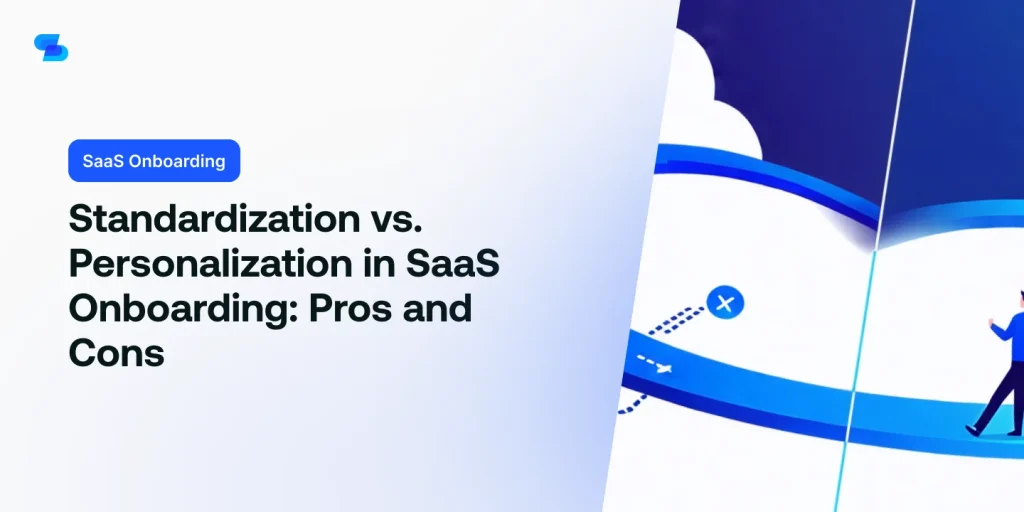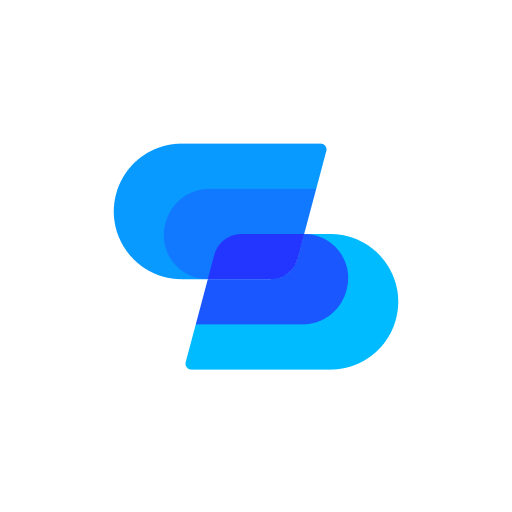When it comes to SaaS onboarding, you’re likely torn between standardization and personalization. On one hand, standardizing your onboarding process can streamline interactions, reduce churn, and improve retention. But, on the other hand, this one-size-fits-all approach might overlook unique user needs and limit opportunities for meaningful engagement. As you weigh the pros and cons, consider this: what if you could strike a balance between efficiency and personal touch? Can you create an onboarding experience that’s both scalable and tailored to individual users? The answer lies in understanding the advantages and drawbacks of each approach – and we’re just getting started.
1. Standardization Advantages in Onboarding
By standardizing your SaaS onboarding process, you can considerably reduce the time and resources required to get new customers up and running, allowing your team to focus on higher-value tasks.
This is because a standardized process enables you to create a repeatable and scalable model that can be applied to each new customer.
According to a study by Wootric, companies with a standardized onboarding process see a 25% increase in customer retention rates.
In addition, standardization allows you to identify and eliminate inefficiencies, reducing the time-to-value for your customers.
You can also create a knowledge base of common issues and solutions, enabling your support team to resolve problems more quickly.
Moreover, a standardized process makes it easier to measure and track key metrics, such as customer satisfaction and adoption rates.
By analyzing these metrics, you can identify areas for improvement and make data-driven decisions to optimize your onboarding process.
2. Drawbacks of Standardized Onboarding
As you implement standardized onboarding, you’ll likely encounter some drawbacks that can negatively impact your users’ experience.
You’ll struggle to gain limited user insights, which can make it difficult to tailor your onboarding process to individual needs.
Additionally, a one-size-fits-all approach can lead to a lack of human touch, making users feel like they’re just another number in your system.
Limited User Insights
You’ll often find that standardized onboarding processes fail to provide nuanced insights into individual user behavior, resulting in a one-size-fits-all approach that neglects the unique needs and pain points of each customer.
This limited understanding of user behavior can lead to a lack of personalization, causing users to feel like they’re just a number, not an individual. Without detailed user insights, you can’t identify specific pain points or areas where users struggle, making it difficult to optimize the onboarding process for better adoption and retention.
For instance, a study by Wyzowl found that 83% of customers consider user experience to be a key factor in their purchasing decision. By not providing personalized onboarding experiences, you’re potentially losing customers due to a lack of understanding of their needs.
Furthermore, without user insights, you can’t create targeted support resources, such as tutorials or FAQs, that cater to specific user pain points. This can lead to increased support requests, longer resolution times, and ultimately, a decrease in customer satisfaction.
One-Size-Fits-All Approach
A standardized onboarding process can become a rigid, inflexible framework that stifles adaptability, forcing every user into a predetermined mold and ignoring the unique nuances of their individual needs and goals. This one-size-fits-all approach assumes that all users are identical, with the same pain points, goals, and levels of technical expertise.
You might find that your users are more diverse than you think. For instance, some might be beginners who need more hand-holding, while others are power users who want to dive right in. A standardized process doesn’t account for these differences, leading to frustration and confusion among users who don’t fit the mold.
According to a study by Wyzowl, 69% of users say they’re more likely to recommend a product that offers personalized onboarding. By not catering to individual needs, you risk losing users who might’ve become loyal customers. You’re also missing out on valuable feedback that could help you improve your product.
Lack of Human Touch
Standardized onboarding processes often sacrifice the human element, leaving users feeling isolated and unsupported, like they’re traversing a maze without a guide. When you’re forced to follow a rigid, automated process, it’s easy to get stuck or feel overwhelmed. You might have specific questions or concerns that aren’t addressed by the generic tutorials or FAQs. This can lead to frustration, confusion, and ultimately, churn.
Research shows that 80% of customers are more likely to do business with a company that offers personalized experiences. By removing the human touch, you’re missing out on an opportunity to build trust and rapport with your users. A standardized approach might be efficient, but it can’t replace the empathy and understanding that comes with human interaction.
When you’re onboarding, you want to feel like you’re being heard, not just processed. The lack of human touch can make you feel like just another number, rather than a valued customer. This can have long-term consequences for customer loyalty and retention.
3. Benefits of Personalized Onboarding
As you shift your focus to personalized onboarding, you’ll start to reap the rewards of a user-centric experience design that’s tailored to each customer’s unique needs and goals.
By doing so, you’ll be able to craft a tailored engagement strategy that speaks directly to their pain points and interests.
This, in turn, will lead to higher customer satisfaction, increased retention rates, and ultimately, revenue growth.
User-Centric Experience Design
By tailoring onboarding experiences to individual users, you can noticeably boost engagement, conversion, and retention rates, as personalized interactions make users feel seen, heard, and understood.
This user-centric approach allows you to create a tailored experience that resonates with each user’s unique needs, goals, and pain points. When users feel like they’re getting a customized solution, they’re more likely to stick around and explore your product.
According to a study by Forrester, every dollar invested in user experience returns $100 in return. That’s a staggering 10,000% ROI! By putting users at the heart of your onboarding design, you can access this potential and reap the benefits.
Personalization also helps to reduce friction points, making it easier for users to get started with your product. This, in turn, reduces churn rates and increases customer satisfaction.
Tailored Engagement Strategy
With personalized onboarding, you can craft a tailored engagement strategy that speaks directly to each user’s motivations, pain points, and goals, effectively supercharging their journey and driving long-term retention.
By understanding what makes each user tick, you can create a customized experience that addresses their unique needs and concerns. This results in higher engagement rates, as users feel seen and heard throughout the onboarding process.
According to a study by Totango, personalized onboarding experiences lead to a 25% increase in user adoption and a 30% increase in retention rates. Additionally, a tailored engagement strategy allows you to identify and address potential pain points early on, reducing the likelihood of user frustration and churn.
4. Resource Intensive Personalization
You’ll likely need to dedicate a significant amount of resources to personalization, which can be a major drawback, especially for smaller SaaS companies with limited budgets. Personalization requires a substantial investment in data collection, analysis, and implementation. According to a study by Gartner, 70% of companies report that personalization is a top priority, but only 17% have the necessary resources to implement it effectively.
As you work to create tailored experiences for each customer, you’ll need to allocate resources for data scientists, engineers, and designers. This can be a significant expense, especially if you’re a startup or a small business. Furthermore, personalization requires ongoing maintenance and updates to guarantee that the experience remains relevant and engaging. This can be a significant drain on your resources, taking away from other critical business functions.
Additionally, personalization can also lead to increased complexity, making it challenging to scale your onboarding process. As you add more personalized elements, your process becomes more intricate, making it harder to manage and maintain. This can lead to increased costs, decreased efficiency, and a lower ROI on your onboarding efforts.
5. Balancing Standardization and Personalization
To strike a balance between standardization and personalization, it’s essential to identify the aspects of your onboarding process that can be streamlined and those that require a human touch.
You’ll need to figure out which parts of the process can be automated, and which ones demand a more tailored approach.
For instance, you can standardize the initial welcome email, but personalize the follow-up interactions based on user behavior.
6. Scalability and Personal Touch
As your SaaS platform grows, it’s crucial to maintain a delicate balance between scalability and personal touch. This balance ensures that your onboarding process efficiently caters to a large user base without sacrificing the human connection that drives engagement and loyalty.
You want to automate repetitive tasks to reduce friction and free up resources, but not at the expense of making users feel like just another number. A study by Wootric found that 80% of customers are more likely to continue doing business with a company that offers personalized experiences.
So, how do you strike the right balance? One approach is to use data and analytics to identify areas where you can standardize the onboarding process. This strategy can free up your customer success team to focus on high-touch, high-value interactions.
7. Customization for User Segments
By analyzing user data and behavior, you can identify distinct segments within your customer base that require tailored onboarding experiences to maximize engagement and conversion rates.
For instance, if you’re offering a project management tool, you might have segments like solo entrepreneurs, small teams, and enterprise clients. Each segment has unique needs, pain points, and goals. By customizing the onboarding process for each segment, you can increase the chances of them sticking with your product.
For solo entrepreneurs, you might focus on simplifying the onboarding process, highlighting features that help them manage tasks efficiently.
For small teams, you could emphasize collaboration features and provide interactive tutorials on how to assign tasks and track progress.
Enterprise clients, on the other hand, might require more extensive onboarding, including customized training sessions and dedicated support.
8. Measuring Onboarding Success Factors
What metrics are you tracking to confirm your SaaS onboarding process is driving the desired outcomes, such as increased customer retention, reduced churn rates, and improved overall user experience?
You’re likely measuring progress through key performance indicators (KPIs) like time-to-first-value, adoption rates, and customer satisfaction scores. But are you digging deeper to understand the why behind these numbers?
To get a more thorough view, you should also be tracking metrics like feature adoption velocity, which shows how quickly users are adopting your product’s core features.
You should also be monitoring user engagement metrics, such as login frequency and session duration, to gauge how invested users are in your platform.
In addition, measuring the effectiveness of your onboarding process through metrics like the number of support tickets or customer complaints can help you identify pain points and areas for improvement.
To Wrap Up
As you weigh standardization and personalization in SaaS onboarding, remember that a balanced approach is key.
By automating initial interactions and following up with personalized touchpoints based on user behavior, you’ll drive engagement and retention.
It’s not about choosing one over the other, but about strategically combining both to create an efficient, yet tailored experience.
By doing so, you’ll set your users up for success and ultimately, boost your bottom line.

